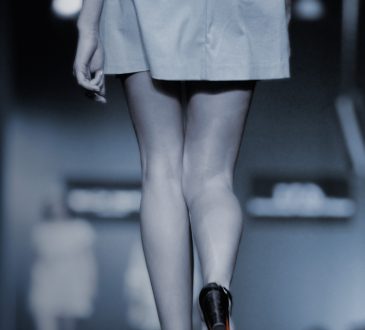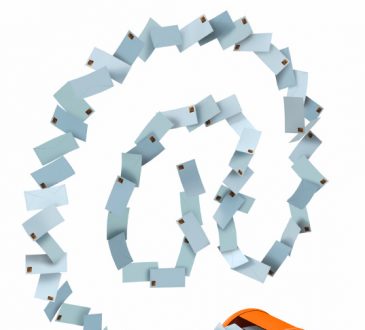7 mitów na temat doboru firmowych upominków
Inspektor Gadżet fot. istockphoto.com Z gadżetami reklamowymi zetknął się każdy. Najczęściej korzystają z nich większe firmy. Dlaczego? Wielu małych przedsiębiorców często myśli, że to sporo kosztuje. Okazuje się jednak, że koszt wcale nie musi być duży. Bo gadżet to nie tylko masówka „dla każdego”. Ponadto, może być nim praktycznie wszystko. Racjonalne podejście do planowania gadżetów, nie tylko nie spowoduje znacznego uszczuplenia firmowego budżetu, a przede wszystkim zagwarantuje, że spełnią one swoją rolę, czyli wzrost świadomości marki. Bo taki jest cel główny gadżetów – by nasza marka została zapamiętana, a przede wszystkim, by przyczyniło się to do wzrostu liczby klientów. Pierwszym krokiem do tego racjonalnego podejścia, będzie obalenie kilku mitów. 1. BUDŻET OGRANICZA Budżet zawsze jest ograniczony, ale nas ograniczać nie musi. Kreatywność w przygotowaniu firmowych upominków może być największym atutem, który wyróżni nasze gadżety spośród konkurencji. Czasem upominki skromne, ale z pomysłem, mogą być skuteczniejsze od prezentów droższych, aczkolwiek nieprzemyślanych. 2. NAJLEPSZE SĄ GADŻETY UNIWERSALNE Klasyczne w formie długopisy, kubki, koszulki niekoniecznie sprawią, że wyróżnimy się na tle konkurencji. Przy wyborze warto jest mieć na uwadze profil swojej firmy i kreatywnie dobierać do niego gadżety reklamowe. Jeśli prowadzisz sklep z artykułami budowlanymi – na pewno firmy budowlane ucieszą się z np. funkcjonalnej miarki z logo twojej firmy, czy też obrandowanych ołówków stolarskich. Będą ich używać na co dzień, a gdy przyjdzie do zakupu materiałów jest dość prawdopodobne, że – zaprzyjaźnieni z Twoją marką – wrócą do Ciebie po zakupy. 3. NAJLEPIEJ, GDY ZAMÓWIĘ WIĘKSZE ILOŚCI Przy zakupach większych ilości faktyczna cena jednostkowa staje się coraz niższa. Jednak pamiętajmy, że nie wszystkie gadżety będziemy rozdawać hurtowo – na spotkaniach, targach etc. Trzy kartony długopisów może i wystarczą na 2 lata, ale po pół roku już się wszystkim dookoła znudzą. Lepsze będą krótkie serie. Spróbuj wejść w skórę swojego klienta i określić, co może być mu przydatne, a co od razu wyrzuci czy schowa do szuflady. Po prostu dobierz prezent do obdarowywanego. Gadżet spełnia swoją rolę, gdy jest widoczny i używany. Świetnie sprawdzają się wszelkiego rodzaju gadżety elektroniczne, biurowe czy turystyczne. Jednak jeśli przygotowujesz prezenty dla kadry kierowniczej – pamiętaj, by zaakcentować pozycję osób obdarowanych. Zwykłe kubki czy długopisy będą tu raczej kiepskim pomysłem. 4. WAŻNY JEST EFEKT To akurat prawda, ale... nie do końca. Ważny jest długotrwały efekt. Czekoladki firmowe może i są słodkie, ale staną się wspomnieniem już po pierwszej kawie, do której zostaną spożyte. Natomiast ciekawy kubek czy zaparzarka ma szansę stać się ulubionym naczyniem do kawy i przypominać o marce – w pracy lub w domu – przez długie miesiące! 5. KONKURENCJA JEST NAJLEPSZYM WZOREM To, co sprawdza się u innych, na pewno sprawdzi się i u mnie. Po co wymyślać. Błąd. Podstawowa zasada marketingu – Wyróżnij się! Jeśli konkurencja obdarowuje klientów kubkami, nie musisz robić tego samego! Ciężko wiele razy używać tych samych gadżetów – nie chcesz chyba być posądzony o brak kreatywności? 6. OPAKOWANIE LĄDUJE W KOSZU Nie tylko gadżet się liczy. Bardzo ważne są opakowanie i sposób dostawy, bo one stanowią o pierwszym wrażeniu. Na opakowaniu można także umieścić nadruki, a ciekawy i niebanalny sposób dostawy skoncentruje uwagę na naszym prezencie. Oczywiście prezent może być prosto z „linii produkcyjnej”, ale można też pomyśleć o jego niestandardowej wersji. Odpowiednio przerobiony, udziwniony, pięknie opakowany, na pewno przyciągnie uwagę, a przy okazji wywoła zainteresowanie Twoimi produktami, pozwoli zapoznać się z ich wyglądem, jakością. 7. NAJLEPIEJ UNIKAĆ GADŻETÓW SEZONOWYCH Gadżety sezonowe zalegają potem w magazynie przez długie miesiące... Może jeśli zamówimy ich za dużo. Jednak dopasowanie się do pór roku i okoliczności (np. świąt) daje Twoim upominkom firmowych podwójną moc. Więc pamiętaj o porze roku! Jesienią – w modzie są polary i parasolki, latem – czapeczki, akcesoria plażowe. Zbliżają się Święta, Nowy Rok – warto podarować swoim klientom jakiś niezapomniany prezent. Zaskocz ich pięknym lub nietypowym kalendarzem, który towarzyszyć im będzie w biurze przez cały kolejny rok! Jak dobrać firmowe gadżety? Jeśli już zdecydujemy się wydać firmowe pieniądze na zakup materiałów reklamowych, to ich wybór powinien być naprawdę rzetelnie przemyślany i dostosowany do rodzaju prowadzonej działalności gospodarczej. Można to obmyślić samemu, ale warto zdać się w tym przypadku na agencję reklamową. Nie tylko przeanalizuje nasze potrzeby pod kątem komunikacji z poszczególnymi grupami kontrahentów, ale przede wszystkim, opierając się na doświadczeniu i kontaktach z producentami, przedstawi nam wachlarz możliwości do wyboru, także zróżnicowany pod względem kosztowym. Co ważne, obsługa agencji gwarantuje, że wszystkie wychodzące z firmy materiały reklamowe pozostaną w spójności z komunikacją wizerunkową firmy. Będą wykonywane z użyciem tych samych kolorów, tego samego logo, by po pewnym czasie jednoznacznie kojarzyć się z firmą i jej produktami....













